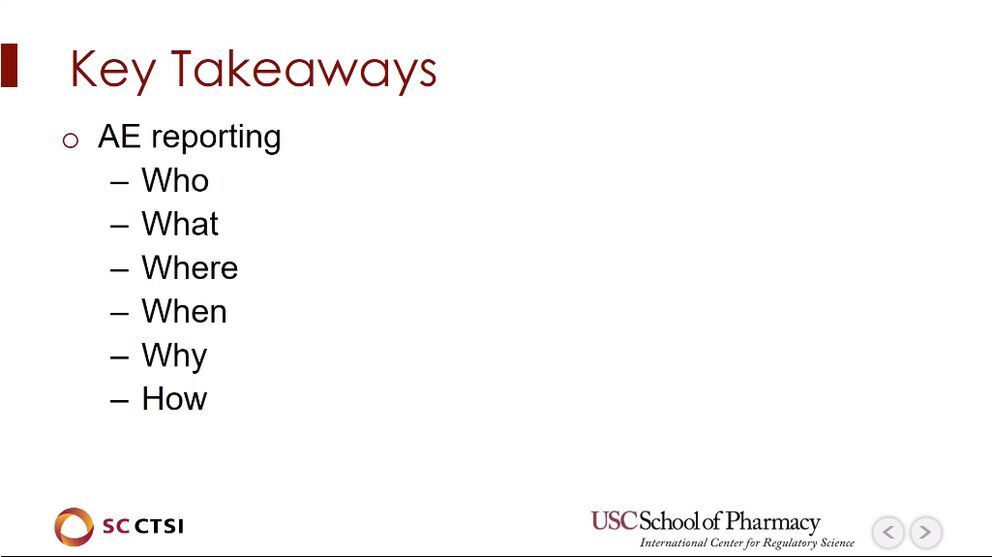- Key Takeaways
- Institutional Review Board (IRB) Reporting Flowchart
- Adverse Event (AE) Reporting Flowchart
- Case Study: Interim Monitoring Visits
This case study gives a glimpse of our modules launched by USC School of Pharmacy. - Poll time! The topic I would like for the spring 2019 boot camp is:
- A severe AE is the same thing as a serious AE.
- If an AE becomes expected during the course of a multi-site investigator-initiated trial, the central IRB is responsible for updating all participating sites.
- For a serious adverse event that is not fatal or life-threatening but which is drug related and unexpected, as the sponsor I must submit this to the FDA in how many days?
- In a clinical trial, my clinic has to submit serious adverse events to the sponsor if I assess them as related to study drug.
- My clinic just learned that one of our study subjects passed away in hospice. I can report “death in hospice” as the adverse event term until I learn the cause of death. Until I learn the cause of death, I do not have to provide an assessment of relatedness to study drug.
- Only safety data from controlled clinical trials is required to be collected and submitted to regulatory authorities
- Experience sharing about the boot camp
- Q&A session
Regulatory Science Symposium: Pharmacovigilance and Safety Reporting Session 8: Wrap up (2018)
In this series, we will discuss pharmacovigilance and safety reporting in clinical trials. Case studies are presented throughout the series.
Chair and Associate Professor of Regulatory and Quality Sciences Associate Director, D. K. Kim International Center for Regulatory Science
Course Syllabus/Topics
Acknowledgement
Accompanying text created by Khyati Ashtekar | Graduate Student, Regulatory Science, USC School of Pharmacy | ashtekar@usc.edu

